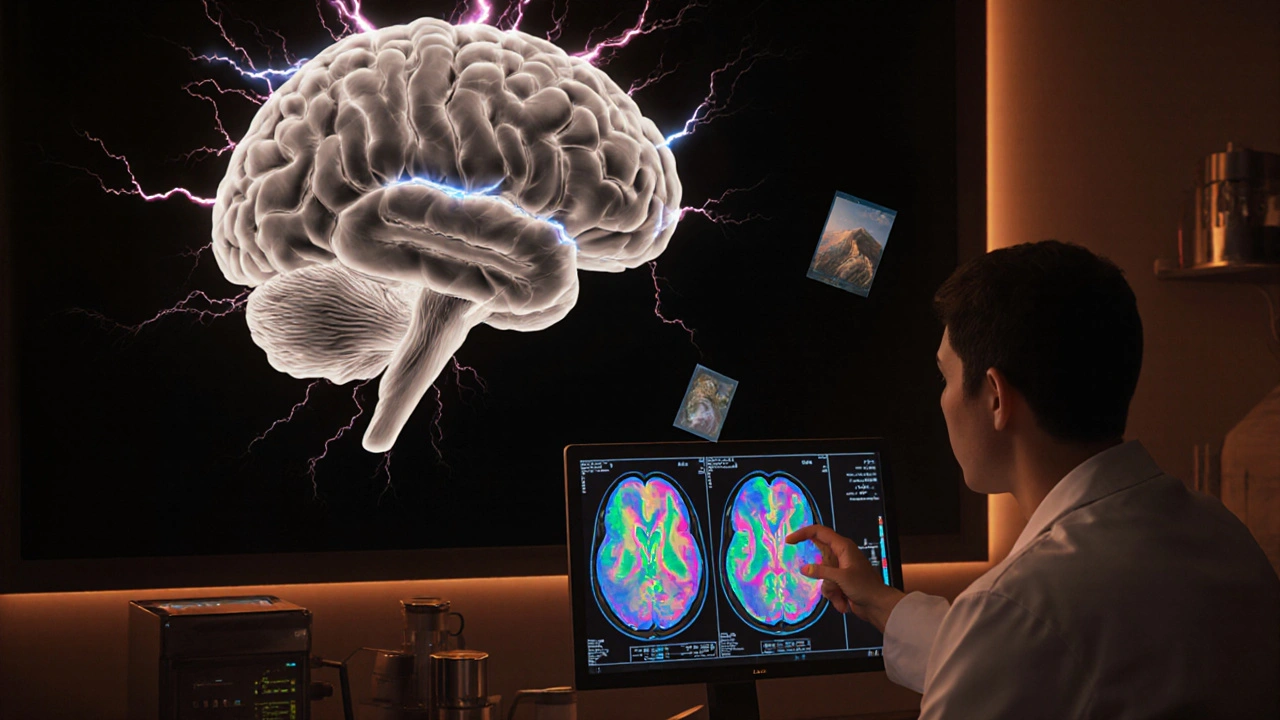Epilepsy Brain Damage: What You Need to Know
When talking about epilepsy brain damage, the persistent injury to brain tissue that can result from uncontrolled seizures. Also known as seizure‑induced injury, it often shows up as memory gaps, learning difficulties, or personality changes. This condition doesn’t happen in isolation – it encompasses the seizure, which is a sudden, abnormal electrical discharge in the brain that can damage neurons when it repeats over time. Managing the risk means ant antiepileptic drugs, medications that aim to stabilize neuronal firing and prevent seizure spread while clinicians also rely on neuroimaging, tools like MRI or CT scans that reveal structural changes in the brain. The relationship is clear: frequent seizures increase the chance of visible lesions, and those lesions often correlate with cognitive impairment, declines in memory, attention, and executive function. Understanding these links helps you see why early detection and consistent treatment matter.
Key Factors that Shape Outcomes
First, the type and duration of seizures matter a lot. A brief focal seizure might cause only a tiny spot of damage, while a prolonged generalized tonic‑clonic episode can flood the brain with excitatory chemicals, leading to widespread cellular stress. Studies show that status epilepticus – a seizure lasting longer than five minutes – dramatically raises the odds of permanent injury. Second, the age at which seizures start influences recovery. Younger brains have more plasticity, so they can sometimes rewire around damaged areas, yet they’re also more vulnerable to developmental setbacks if seizures go untreated. Third, comorbid conditions like traumatic brain injury or stroke can compound the harm; the brain already weakened by one insult is less able to tolerate another. Finally, lifestyle choices such as sleep hygiene, alcohol consumption, and medication adherence directly affect seizure frequency. Skipping doses or missing sleep can trigger breakthrough seizures, which in turn adds to the cumulative damage load.
Putting all this together, you’ll find that the best approach blends accurate diagnosis, personalized medication plans, and lifestyle tweaks. Modern MRI protocols can spot tiny cortical dysplasias that were invisible a decade ago, letting doctors choose the most effective antiepileptic drug or consider surgery when medication fails. Meanwhile, therapeutic drug monitoring ensures you stay in the therapeutic window without toxic side effects. On the patient side, keeping a seizure diary, using wearable seizure detectors, and maintaining a regular sleep schedule all shrink the risk of the next injury. Below you’ll discover a range of practical guides, drug comparisons, and lifestyle tips that together form a toolbox for minimizing epilepsy brain damage and preserving brain health.

How Tonic-Clonic Seizures Affect the Brain Over Time
Explore how repeated tonic-clonic seizures cause brain changes, memory loss, mood issues, and how imaging, medication, and lifestyle can slow long-term damage.